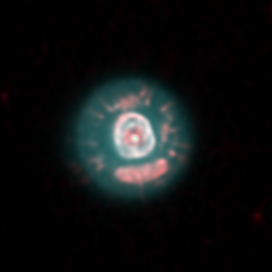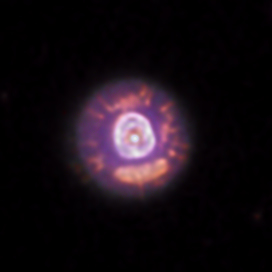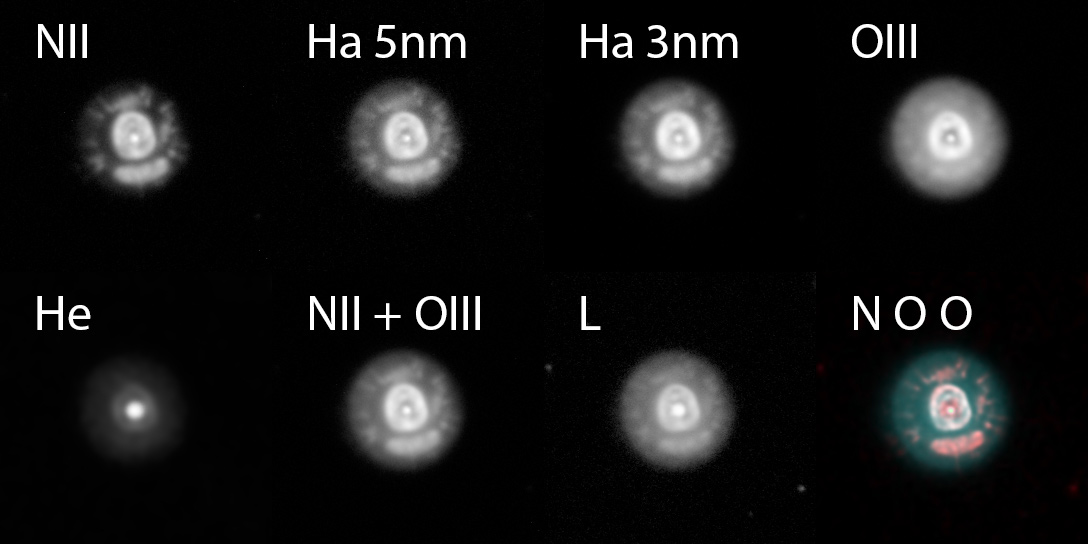I'd planned to image a very faint planetary binned x 4, but felt compelled to shoot something binned x 1 when I realized the seeing was good.
NGC 2392 was the only bright planetary i could think of off of the top of my head
so decided to give it a shot unbinned with the NII filter
so decided to give it a shot unbinned with the NII filter which gave great detail in the reds
NII OIII:
the source of the NII globules is still a bit of a mystery
Kitchen sink pallet--NII red, Ha green, OIII blue, He magenta:
just for fun i gathered a few exposures with a variety of filters (thanks to bilgebay for the 3 nm Ha data):
minimal processing, just digital development, except the last.
note the lack of detail in the OIII, with even less in the HeII
while NII + OIII is remarkably similar to Ha
(bill w's conjecture Ha~NII+OIII for PN, Ha~SII+OIII for emission nebulae).
Filter digression:
In general, the narrower the bandwidth of the filter, the better the signal to noise ratio (assuming your exposure is long enough to bring out background signal). I touched on this in prior post covering the rationale behind narrow band filters in light polluted skies.
However, narrower isn't always better. traditional "Ha" filters typically capture Ha emissions at 656 nm and NII at 658 nm (older papers refer to them as Ha + NII). The new astrodon 3 nm Ha filters, in theory cut out a portion of the NII signal, which is not desirable when imaging planetary nebulae.
bilgebay recently captured an image with very similar equipment, but used a 3 nm Ha filter (656 nm).
he was kind enough to send me the Ha data for comparison as i was curious to see how much loss of NII signal (658 nm) affected the image. not quite a perfect comparison as he used >4x the exposure time for his subs, while i probably had better seeing. you can see the comparison in the mosaic above. the difference isn't as great as i'd expected, but there is definitely better contrast between the "eskimo's fur" and the circular nebulosity in the broader 5 nm Ha image.
8" LX200R, SX Trius 694 binned 0.4"/px
astrodon 5nm Ha, 3nm OIII, 3 nm NII, chroma 4 nm He
ASA DDM60
Ha 5x5 min, OIII 8x5 min, HeII 14x 5 min, NII 30 x 5 min, L 14 x 1 min
2/11,12,16/16
eastbluff, CA
no calibration except luminance ;)
Ha 3 nm 7 x 20 min
Celestron C8 Edge HD, Atik 460 EX Mono, astrodon 3 nm Ha
Bilgebay Observatory, Mugla, Marmaris, Turkey
interestingly, sedat used also used an 8" SCT with the Sony ICX694 chip.



No comments:
Post a Comment